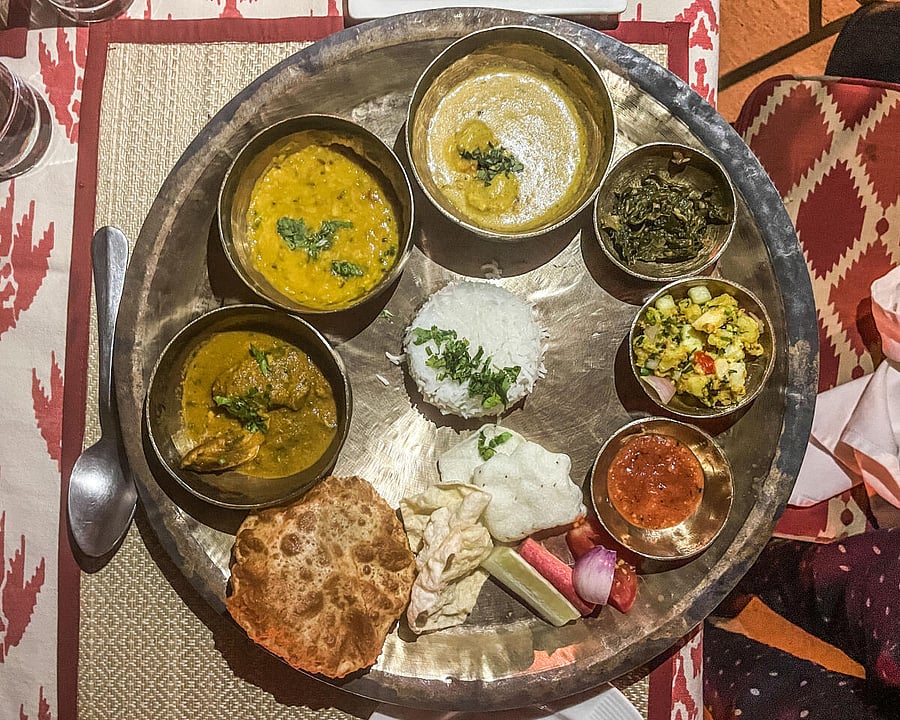
The Baigas are a particularly vulnerable tribal group indigenous to the forests of Central India. Concentrated around the Balaghat and Mandla districts of Madhya Pradesh, the Baigas are known for their vibrant dances, colourful attires and heavily tattooed women. Yet, the world remains oblivious to the unique gustatory delights of the Baiga cuisine, which is slowly fading away from the culinary map of India.
Celebrating nature’s bounty
Baiga cuisine is a true celebration of nature’s bounty because it involves the liberal use of many forest products including wildflowers, fruits, roots, and herbs. Having lived in the Central Indian jungles for ages, people of the Baiga tribe are adept at recognising nutritious plant products, medicinal herbs and most importantly, poisonous flora. It would not be wrong to say that their relationship with the forest is sacred. One of the most iconic forest ingredients in Baiga cuisine is the fragrant mahua flower that blooms only in spring and summer. The fleshy, greenish-white flower of the mahua tree is a superfood and is known to possess several medicinal properties.
“The mahua plant plays a very important role in our cuisine and daily lives. We extract cooking oil from mahua seeds and make medicines from the bark. Mahua flowers are juicy and have high sugar content. They are sundried, powdered and then used in making puris or fermented to make alcohol,” said Sanjay Baiga, a chef at a lodge in Bandhavgarh. “Mahua laddoos and barfis are all-time favourites among the kids of our village,” he added.
Sanjay, who belongs to the Baiga tribe himself, has worked as a chef for the past 12 years and prepares traditional Baiga thalis for guests every week. A typical Baiga platter consists of rice, lentils and greens cooked in the local style, mahua puri, traditional chicken curry, mash of roasted vegetables (locally known as chokha), betelnut flavoured dumpling curry — all served with a spicy relish of tomato and garlic and a glass of refreshing sattu sharbat (gram flour drink).
However, as Sanjay pointed out, it is not easy to find authentic Baiga food in and around Bandhavgarh, unless you get invited to a local’s home. While most restaurants serve the usual Indian fare, a few rare resorts give their guests a taste of local tribal culture by serving Baiga dinner alongside an evening filled with tribal dance and songs.
Love for millets
Millets have always been an integral part of traditional Indian cuisine and a staple for the tribes of Central India. They are rich in nutrients, have a plethora of health benefits, and can be cultivated in areas with low water supply and poor soil quality. With 2023 being declared as the International Year of Millets, the focus has shifted to tribal cuisines like those of the Baiga where millets form the very crux of cooking.
Two main millets that the Baigas are fond of are kodo and kutki, both of which are hardy crops and can grow on less fertile soil. Commonly, kodo and kutki are used to make millet rice and chapatis. However, with a recent shift in tastes and through a helpful training programme of Baiga Nirman with the Using Diversity (UD) Network, Baiga women are learning to make more appealing dishes from millets. Pulao, laddoos, kheer, wadas, sev and bhajiyas are more popular nowadays.
Age-old cooking techniques
An interesting aspect of Baiga cuisine is the fact that traditional methods of cooking, dating back centuries, are still used in Baiga homes. An outdoor clay chulha is an integral part of every Baiga kitchen, even now. The women of the house use these firewood-powered chulhas to do their daily cooking. Food prepared on open stoves is believed to be healthier and more appetising. It is hard to disagree after having a mouthful of delicious aloo chokha — a dish made by roasting potatoes on an open-air chulha, mashing them, and then tossing it with onions, tomatoes and coriander. The taste is heavenly. Chokha (literally translates to all things pure) dishes such as baingan chokha, tamatar chokha and aloo chokha are a staple among the people of the Baiga tribe.
For many, it brings back fond memories of home, friends and of comfort food at night. That’s why, dinner is often referred to as chokha bihari in this part of India — a simple but heartening meal of roasted vegetables eaten with your near and dear ones. Old-style grinding stones called sil batta are still a favourite because the Baiga community likes their chutneys and masalas to be ground the authentic way. Stone grinding adds a distinct taste to the food that is hard to achieve in the modern-day mixer-grinder.
“My mother and sister-in-law still use the chulha and sil batta regularly at home. Even though I use a combination of traditional and modern equipment at the hotel, I always prefer cooking the old-fashioned way,” said Sanjay. “I don’t want to give up on our ancestral methods. They are healthy and augment our food with unique flavours. Our food and our methods are our identity,” he added.
Age-old cooking techniques and abundant use of forest products give the Baiga cuisine exceptional flavours and notable textures that are not found elsewhere in the subcontinent. But most importantly, they give an identity to the Baiga tribe of Central India, their heritage and culture, and their intimate relationship with nature.